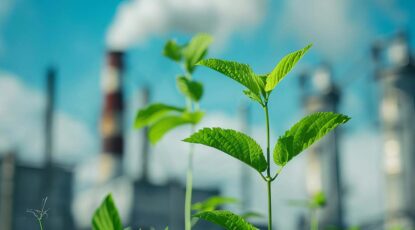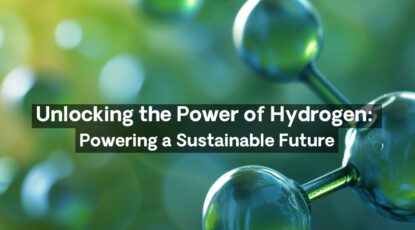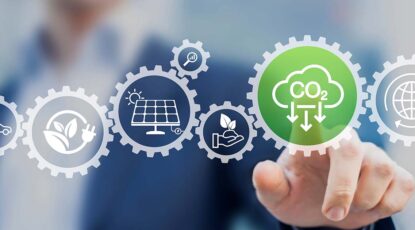It’s an imperative that we produce energy which address both the causes and consequences of climate change, avoids impacts on human health, and enables business and community resilience. It’s a tall order, but Bloom is at work every day on the technology, business models and policy frameworks that will enable this reality.
Bloom’s History of Innovation
Bloom Energy has been at the forefront of the energy sector since its inception and has been working on offering alternatives to centralized energy generation and delivery for nearly two decades. We believe in the power of flexible and modular solutions that can be customized to the needs of our customers.
We believe distributed solutions and microgrids will be supporting an ever-wider variety of newly electrified processes in the years to come. Additionally, we recognize that the need for immediate and ambitious climate action from the energy sector will accelerate transformation, with a focus on zero-carbon and renewable solutions.
As the world moves towards decarbonization, our technology is ready to meet the requirements of our customers in alignment with a transformed energy sector.
Our Focus on Sustainability
Our products lower greenhouse gas (GHG) emissions by displacing less efficient centralized power generation alternatives, often combustion-based power producers with substantial watershed and air quality consequences that frequently and disproportionately impact vulnerable communities that typically surround them. Our microgrid deployments provide critical resilience from grid instability driven increasingly by climate-related extreme weather events, and our products achieve this while using no water during operation and at very high efficiency in a small footprint, which optimizes land use.
Our commitment to sustainability is reflected not only through the impacts of our solutions in operation but also through the impacts of our manufacturing processes and other operations. We are committed to resource efficiency, responsible design, materials management, and recycling. We endeavor to consistently increase our supply chain responsibility and manage our product end of life so that we’re able to operate in ways that create long-term societal value.

Greenhouse Gas Emissions
As an efficient distributed energy resource, when a new Bloom Energy Server is brought online, it reduces the amount of power required from energy sources that generate “on the margin” – meaning those units that are operating to meet the last unit of energy demand. Since our Energy Servers’ carbon intensity is typically lower than the displaced (generally fossil-powered) alternatives, the net impact is measurable emissions reductions.
Air Quality
Our Energy Servers emit virtually zero smog-forming particulates [nitrogen oxides (NOx) and sulfur oxides (SOx), particulate matter (PM)] We create air quality benefit in the same way we create net GHG benefits – through the displacement of combustion power generators and the replacement of diesel backup systems through our microgrid deployments. According to many recent studies, local combustion-related pollutants like NOx, SO2, and particulate matter (PM) are far more harmful to human health than previously believed, and the greatest impacts occur disproportionately in lower-income communities of due to the likely proximity to industrial facilities, including power plants and use of large diesel backup systems. According to a recent Harvard study, air pollution from the combustion of fossil fuels is responsible for as many as one in five deaths worldwide. Through our non-combustion energy generation, Bloom helps improve air quality in these communities.
Water & Wastewater Management
Our Energy Servers withdraw minimal water only during start-up and if the system trips and needs to restart. Otherwise, Energy Servers use no water during operation. Conversely, thermal power plants require significant amounts of water for cooling. In fact, the number one use of water in the U.S. is for cooling power plants. To produce one megawatt per hour for a year, thermoelectric power generation for the U.S. grid withdraws approximately 156 million gallons of water more than our platform.
Product Efficiency
As the fuel cells age, our field service team replaces fuel cell stacks to keep our systems operating appropriately. We carefully track the efficiency and stack life of our fleet to demonstrate our commitment to operating with the lowest emissions intensity possible. Moving forward, we will be able to introduce new product features and fuel compatibility that will enhance sustainability performance even as systems age.
Product Stewardship and Circulatory
We take a cradle-to-cradle perspective on product design and use. At the beginning, we strive to reuse components and recoverable materials where feasible and use conflict-free, non-toxic new resources where needed. We design our equipment so that components can be easily refurbished as needed instead of requiring new equipment. Finally, we cover as many materials and components as possible during end-of-life management, reusing these materials and components.
[Em]Powering Resilient Communities
As a mission-driven company, Bloom will continue to develop innovative solutions to respond to challenging problems. To this end, Bloom Energy have committed to strategic expansion across our five growth levers of product innovation spanning zero-carbon, renewable and carbon-negative power, and transportation solutions. They include hydrogen solid oxide fuel cells, hydrogen solid oxide electrolyzer cells, carbon capture utilization and storage, biogas, and marine applications. Bloom is excited by the potential of these solutions to empower us to deliver on our mission to make clean, reliable energy affordable for all.
Read more about Bloom’s sustainability efforts here.
#TogetherWeCan #BeTheSolution
 Stephen Lamm leads Bloom’s sustainability initiatives and supports business development efforts across the company’s decarbonized product portfolio. He’s spent 15 years working in corporate sustainability, environmental markets, and green finance.
Stephen Lamm leads Bloom’s sustainability initiatives and supports business development efforts across the company’s decarbonized product portfolio. He’s spent 15 years working in corporate sustainability, environmental markets, and green finance.



